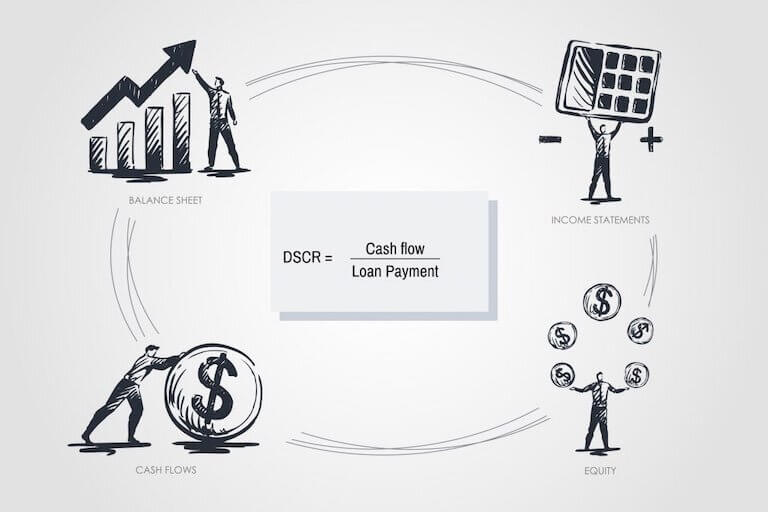Looking to take on debt to finance your business’s growth goals? Calculating your business’s Debt Service Coverage Ratio (DSCR) can help you calculate how much debt, and at what interest rates, you should be taking on.
Taking on debt is a perfectly normal part of growing in the economy. What you need to examine is how much spare cash flow your business can allocate to repaying borrowed money on top of the other recurring expenses it has.
HOW TO CALCULATE THE DEBT SERVICE COVERAGE RATIO (DSCR)
Lenders and funders will often look at the DSCR as a key part of determining the maximum loan amount.
The debt service coverage ratio is defined as net operating income divided by total debt service.
The DSCR formula can be calculated on a monthly or annual basis. You can calculate your business DSCR with the following equation:
Annual Net Operating Income + Depreciation & Other Non-Cash Charges
___________________________________________________
Interest + Current Maturities of Long-Term Debt
Or simplified: DSCR = Cash flow / Loan Payment
What Your DSCR Means
An ideal number to arrive at is 1 or higher. This shows a funder that the business has enough income to pay its debt obligations.
Typically, DSCR requirements range from 1.20x-1.40x. Higher numbers signify stronger, stabilized businesses with sufficient cash flow to cover debt service. Lower numbers indicate riskier businesses to a funder where there is not enough cash flow to cover debt service. A DSCR of 1 is sufficient to cover debt service, however other financial factors may influence the final decision as lenders prefer a financial cushion in case something goes wrong.
Businesses will have many sources of debt from equipment and inventory purchases, debt for growth is entirely normal. The important part to be mindful of is how several small payments can add up and eat up cash flow every month, potentially becoming unmanageable should the market take a dip.
While every lender is different, most that assess DSCR look for a ratio of 1.15 or more. This number can be higher or lower depending on how the overall economy is doing.
Here’s how to interpret your DSCR:
DSCR < 1: You have negative cash flow. You don’t have enough income to service all of your existing debt.
DSCR = 1: You have exactly enough cash coming in to service your debt, but you don’t have an additional cash cushion.
DSCR > 1: You have positive cash flow. The higher your DSCR, the more income you have to pay off your debt.
Ultimately, the debt service coverage ratio compares a business’s level of cash flow to its debt obligations, calculated by dividing the business’s annual net operating income by the business’s annual debt payments. The high above 1 a business’s DSCR is, the greater the indication that the business has enough income to comfortably cover loan principal and interest payments.
If your DSCR is below one, a financing program design for business debt consolidation or refinancing would be a better option to help lower your overall debt obligations in comparison to your annual revenue.
